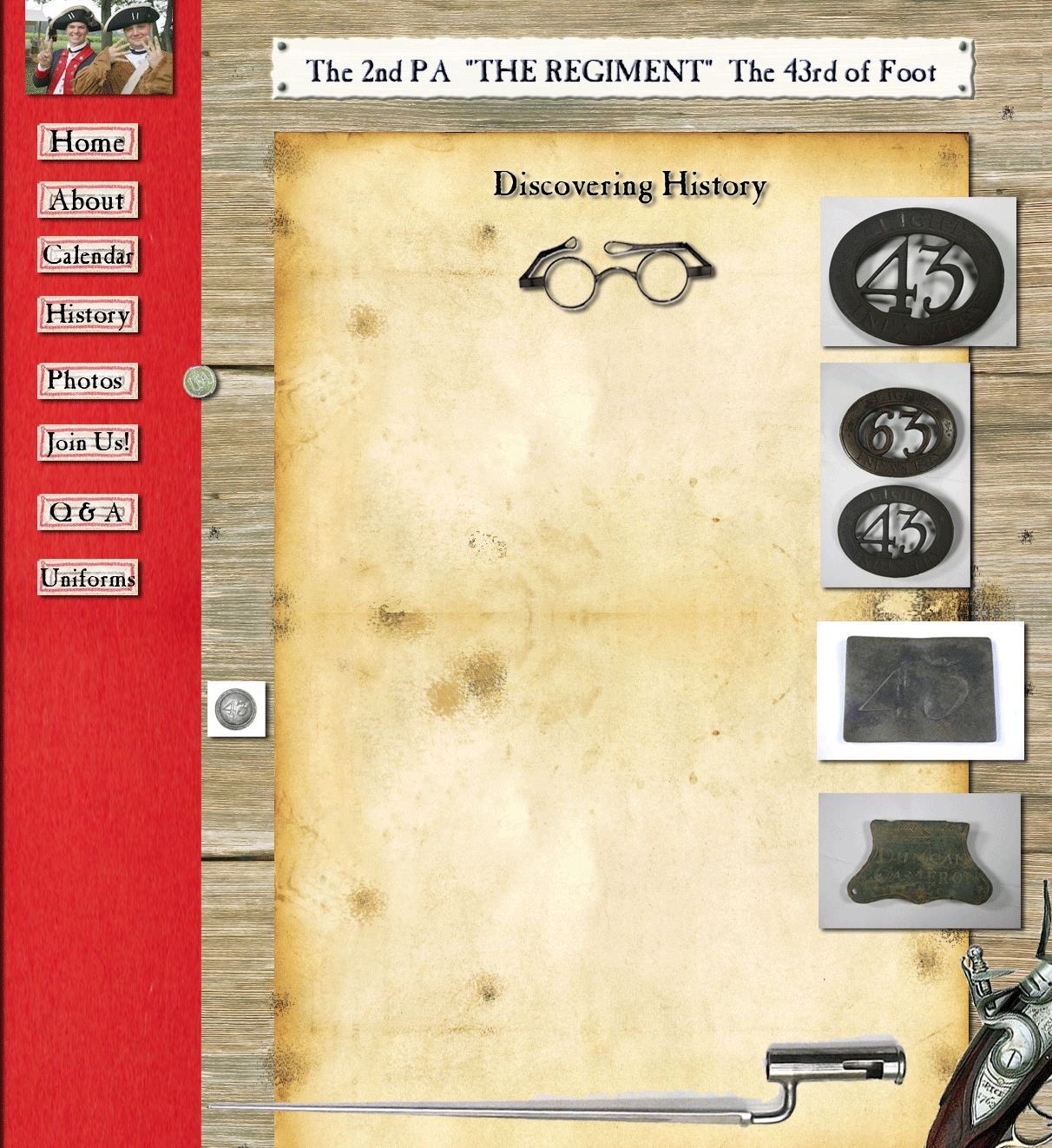ORIGINAL ARTIFACTS OF THE 43RD REGIMENT OF FOOT
Our recreation of the timeless 18th Century British fighting man---the soldier of the 43rd Regiment of Foot--- has been aided by archeological evidence unearthed at campsites and battlefields throughout the original thirteen colonies. In addition to material in museums and public institutions, we have also been able to closely examine and copy rarities in a number of the nation's finest private collections. Such a collection belongs to longtime member Don Troiani, undoubtedly the country's preeminent historical artist (visit Don's website at www.historicalartprints.com/ ). His personal reference collection of pre-1865 American militaria is one of best in existence and features an outstanding array of 18th Century arms, accoutrements and related objects. Here are some original items pertaining to the 43rd of Foot in this amazing collection.
LIGHT INFANTRY CARTRIDGE BOX PLATE. Each British regiment had one company of "light infantry" that was deployed for scouting, skirmishing and guarding the regiment's flanks when on the move. In North America, these specially uniformed and equipped companies were detached from their parent regiments and formed into larger light infantry brigades that operated independently. This brass plate was attached to the flap of the cartridge box worn by the 43rd's light infantrymen and was discovered by Troiani himself at an American winter encampment site in Connecticut, along with some other British accoutrement brass. It is believed the intention was to melt this material down for use in the manufacture of shoe buckles and other needed items for the Continental Army. The more delicate style and oval shape hints that the cartridge boxes of the light companies may have been more compact than those worn by the regular line infantrymen. Almost identical light infantry company plates are known for the 63rd of Foot (shown for comparison) and the 15th and 83rd.
REGIMENTALLY MARKED WAIST BELT PLATE. This simple rectangular brass plate is one of two known specimens belonging to the 43rd of Foot (this from the Hudson Highlands, the other from outside Yorktown). It follows the pattern used by most British units of the period, with the regimental number engraved in Arabic numerals in the center. It fastened the soldier's waist belt of white buff leather on which was attached his bayonet scabbard.
NECK STOCK CLASP OF CAPTAIN DUNCAN CAMERON. One of the more intriguing excavated objects in the Troiani collection is this half of a brass neck stock clasp neatly etched with the name of one of the 43rd's officers, Duncan Cameron. The clasp would have fastened the black cloth or velvet band worn by officers at that time around the neck of their shirt. This relic was excavated several years ago near the Yorktown, Virginia, battlefield. Cameron, himself, was commended in orders by Lord Cornwallis for "distinguishing himself at the American redoubt" in an assault by the 43rd on the night of October 14, 1781. Could the brave officer have lost it in the fight?
REGIMENTAL BUTTON. Each unit of the British Army had its own distinctive regimental coat button, generally marked with the unit's number surrounded by a decorative border. Like those of other regiments, this button of a 43rd of Foot enlistedman is made of pewter with a slightly domed center. This example was found near New York City, while others have been found in the vicinity of Williamsburg and Yorktown, Va. Officers usually wore much more elaborate buttons that were made of thin silver mounted over a bone backing and which had a different design than the buttons of the regiment's rank and file. Unfortunately, at the present time no 43rd of Foot officer's button has been discovered.
